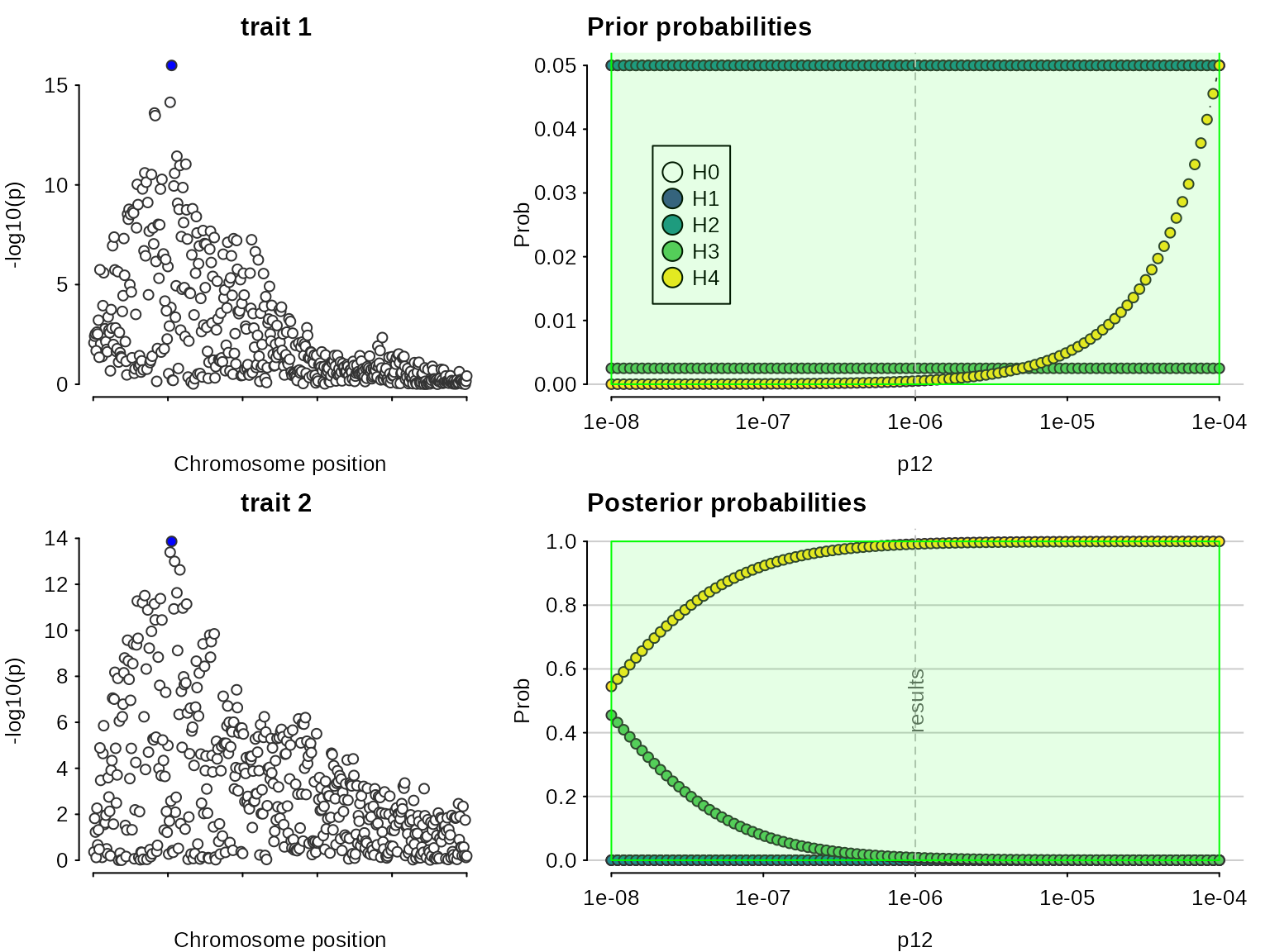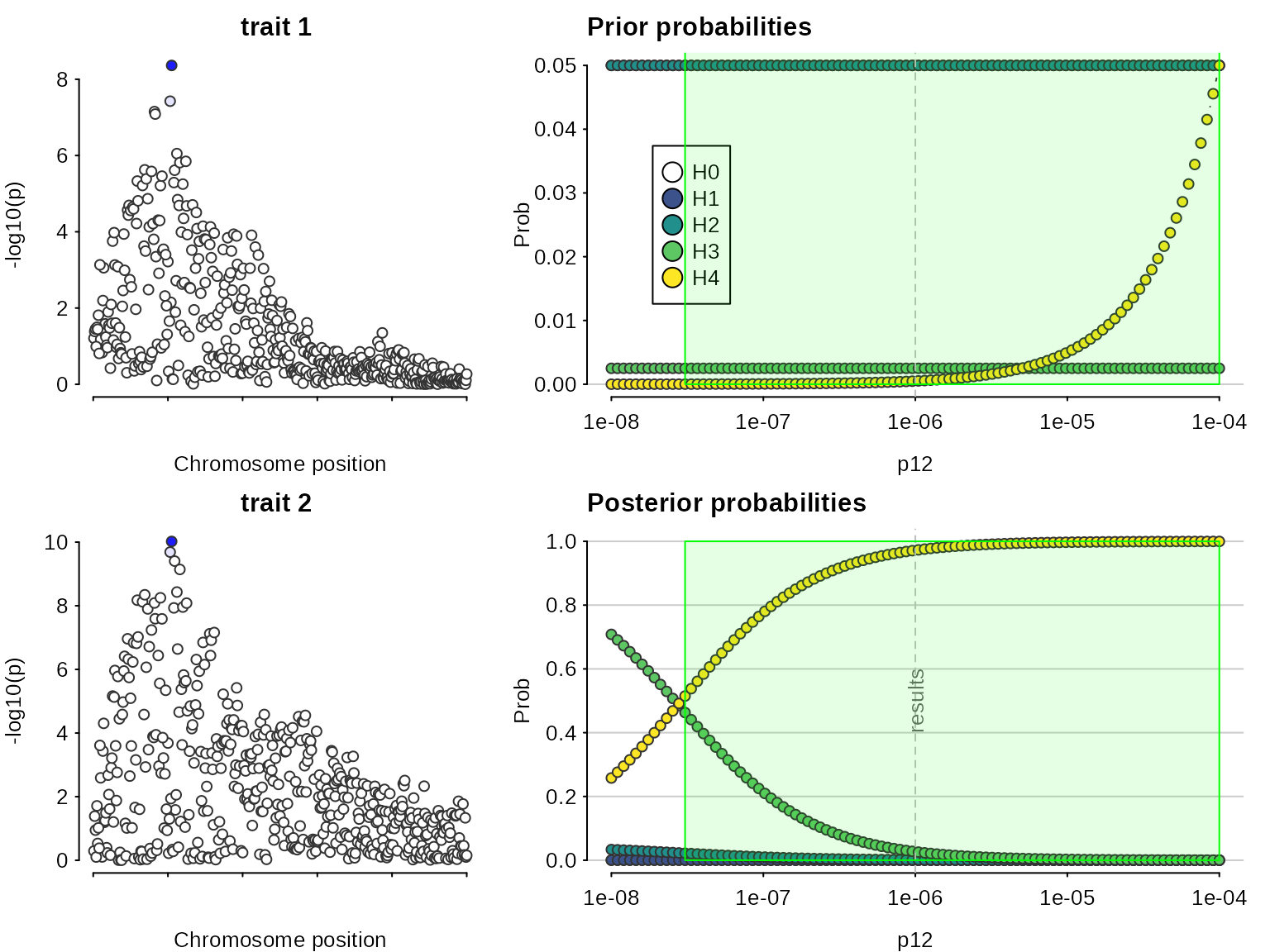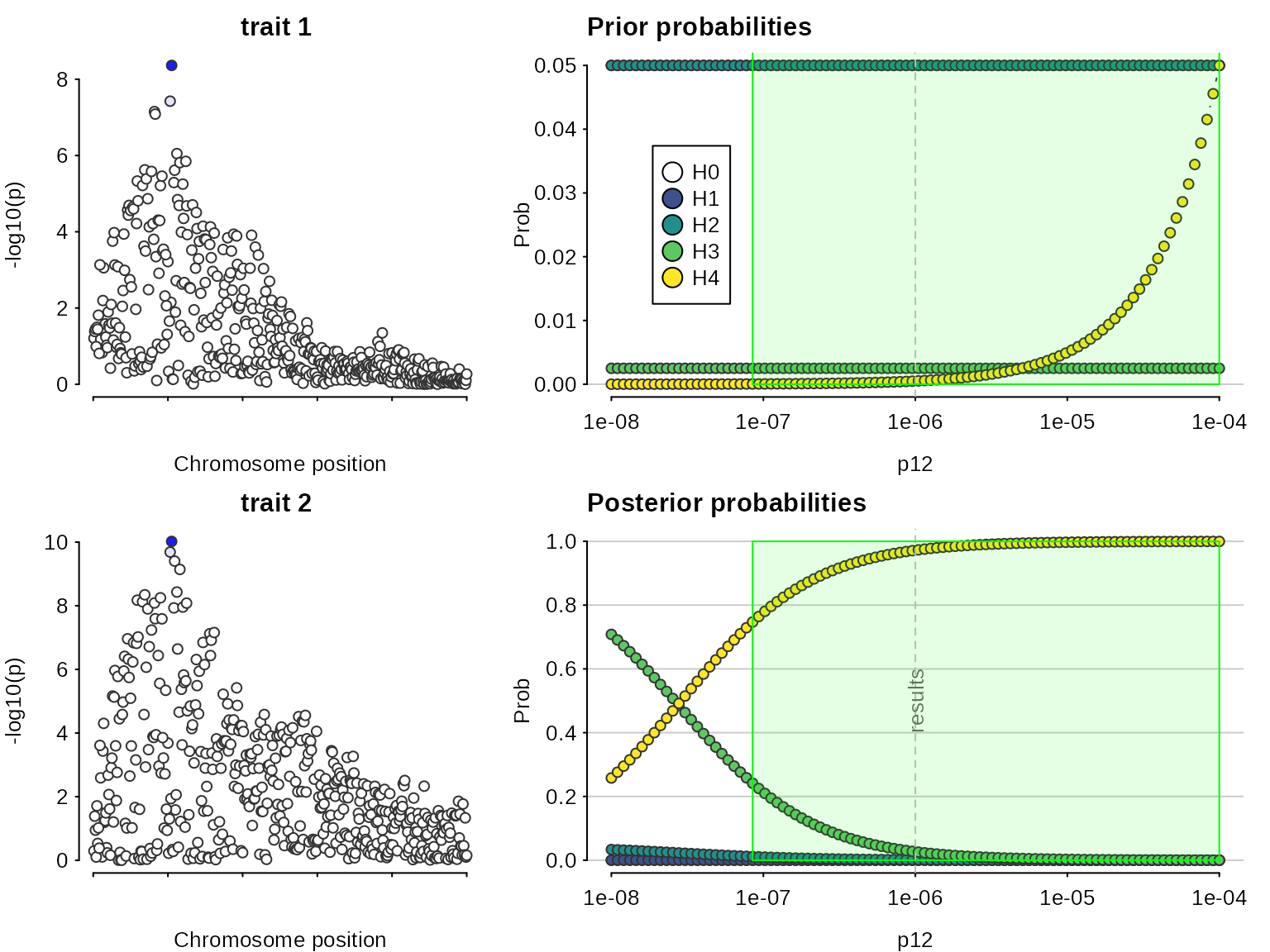
Coloc: sensitivity to prior values
Chris Wallace
2025-12-04
Source:vignettes/a04_sensitivity.Rmd
a04_sensitivity.RmdSensitivity analysis
Specifying prior values for coloc.abf() is important, as results can be dependent on these values. Defaults of seem justified in a wide range of scenarios, because these broadly correspond to a 99% belief that there is true association when we see in a GWAS. However, choice of is more difficult. We hope the coloc explorer app will be helpful in exploring what various choices mean, at a per-SNP and per-hypothesis level. However, having conducted an enumeration-based coloc analysis, it is still helpful to check that any inference about colocalisation is robust to variations in prior values specified.
Continuing on from the last vignette, we have
## This is coloc version 6.0.1
data(coloc_test_data)
attach(coloc_test_data)
my.res <- coloc.abf(dataset1=D1,
dataset2=D2,
p12=1e-6)## PP.H0.abf PP.H1.abf PP.H2.abf PP.H3.abf PP.H4.abf
## 1.37e-17 2.92e-09 8.53e-11 8.28e-03 9.92e-01
## [1] "PP abf for shared variant: 99.2%"
my.res## Coloc analysis of trait 1, trait 2##
## SNP Priors## p1 p2 p12
## 1e-04 1e-04 1e-06##
## Hypothesis Priors## H0 H1 H2 H3 H4
## 0.897005 0.05 0.05 0.002495 5e-04##
## Posterior## nsnps H0 H1 H2 H3 H4
## 5.000000e+02 1.366742e-17 2.915456e-09 8.529214e-11 8.276799e-03 9.917232e-01A sensitivity analysis can be used, post-hoc, to determine the range of prior probabilities for which a conclusion is still supported. The sensitivity() function shows this for variable in the bottom right plot, along with the prior probabilities of each hypothesis, which may help decide whether a particular range of is valid. The green region shows the region - the set of values of - for which - the rule that was specified. In this case, the conclusion of colocalisation looks quite robust. On the left (optionally) the input data are also presented, with shading to indicate the posterior probabilities that a SNP is causal if were true. This can be useful to indicate serious discrepancies also.
sensitivity(my.res,rule="H4 > 0.5") ## Results pass decision rule H4 > 0.5
Let’s fake a smaller dataset where that won’t be the case, by increasing varbeta:
Now, colocalisation is very dependent on the value of :
my.res <- coloc.abf(dataset1=D1a,
dataset2=D2a,
p12=1e-6)## PP.H0.abf PP.H1.abf PP.H2.abf PP.H3.abf PP.H4.abf
## 5.58e-07 1.61e-05 1.26e-03 2.67e-02 9.72e-01
## [1] "PP abf for shared variant: 97.2%"
my.res## Coloc analysis of trait 1, trait 2##
## SNP Priors## p1 p2 p12
## 1e-04 1e-04 1e-06##
## Hypothesis Priors## H0 H1 H2 H3 H4
## 0.897005 0.05 0.05 0.002495 5e-04##
## Posterior## nsnps H0 H1 H2 H3 H4
## 5.000000e+02 5.583635e-07 1.612179e-05 1.261187e-03 2.669434e-02 9.720278e-01
sensitivity(my.res,rule="H4 > 0.5") ## Results pass decision rule H4 > 0.5
In this case, we find there is evidence for colocalisation according to a rule only for , which corresponds to an a priori belief that . This means but you would need to think it reasonable that is equally likely as to begin with to find these data convincing.
Note, the syntax can also consider more complicated rules:
sensitivity(my.res,rule="H4 > 3*H3 & H0 < 0.1") ## Results pass decision rule H4 > 3*H3 & H0 < 0.1